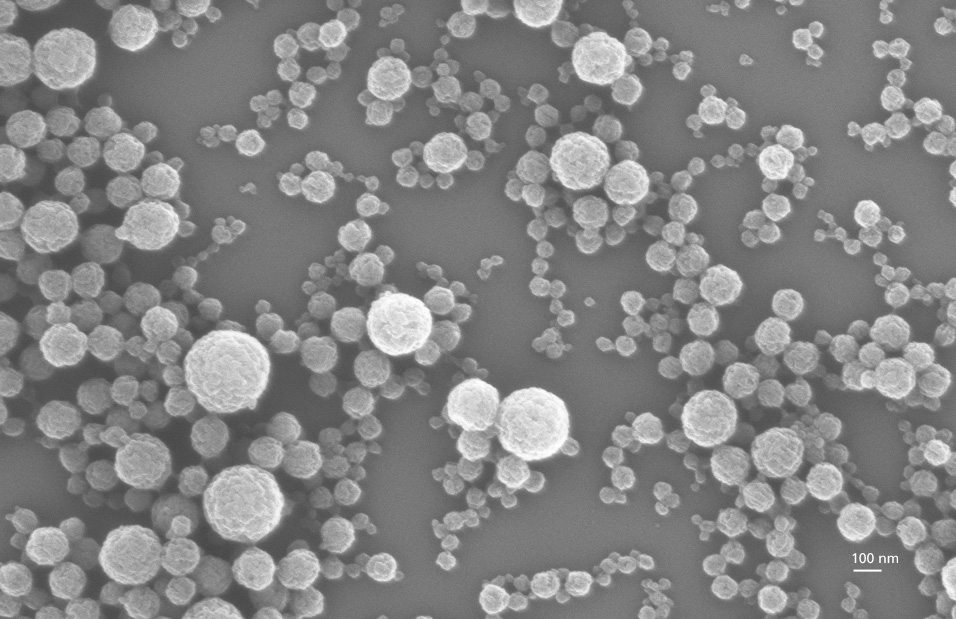Biodiesel mostly still contains waxy plant substances that impair the quality of the fuel: During prolonged storage they can flocculate and are suspected of blocking fuel filters. Researchers at Fraunhofer Institute for Interfacial Engineering and Biotechnology IGB in Stuttgart have developed specific nanoparticles that bind these undesired accompanying substances.
Specific adsorbers for clean biodiesel
Selective removal of sterylglycosides from biodiesel
Vegetable oils from renewable resources such as rapeseed and soya are increasingly being processed into biodiesel. Fat-soluble components of the plant cell membrane, acetylated sterylglycosides, are also added to the oil in the oil mill. As valuable as these plant substances are for human nutrition, they are undesirable in biodiesel. During its production, during the transesterification of the tryglyceride of the oil to methyl esters, the accompanying substances lose their acetyl side chain. Unlike the acetylated form, the resulting steryl glycosides are not readily soluble in biodiesel and crystallize out during storage. Since the crystals are very small, even small quantities can clog the filters in the vehicle. Biodiesel manufacturers are therefore looking for a solution to selectively remove the unwanted plant substances from the oil.
Crosslinked polymer beads
In a project funded by the Union for the Promotion of Oil and Protein Plants (UFOP), researchers from Fraunhofer IGB were able to produce nanoscopically dimensioned polymer particles with selective binding sites for one of these accompanying substances. In the NANOCYTES© process patented by Fraunhofer IGB, monomers that seemed suitable for this purpose were mixed with so-called crosslinkers. These ensure that the monomeric chemical building blocks crosslink to form a tiny polymer bead measuring only 200 to 300 nanometers. During the polymerization process, the substance to be removed, stigmasterol, is added as a characteristic part of the acetylated steryl glycoside so that it is incorporated on the surface of the resulting plastic beads. These embossing molecules are then removed from the particle in a subsequent step. A chemical negative imprint remains on the particles - as a highly selective binding site for stigmasterol.
In the course of the project, initial tests showed that among the adsorbent particles made of different monomers and crosslinkers there are indeed those that selectively bind stigmasterol. It could be shown that stigmasterol was repeatedly better bound by embossed particles than by unembossed particles, which were otherwise produced in the same way.
 Fraunhofer Institute for Interfacial Engineering and Biotechnology IGB
Fraunhofer Institute for Interfacial Engineering and Biotechnology IGB